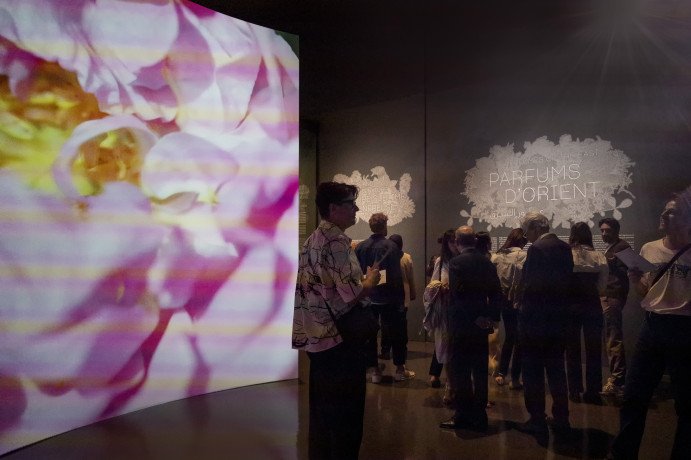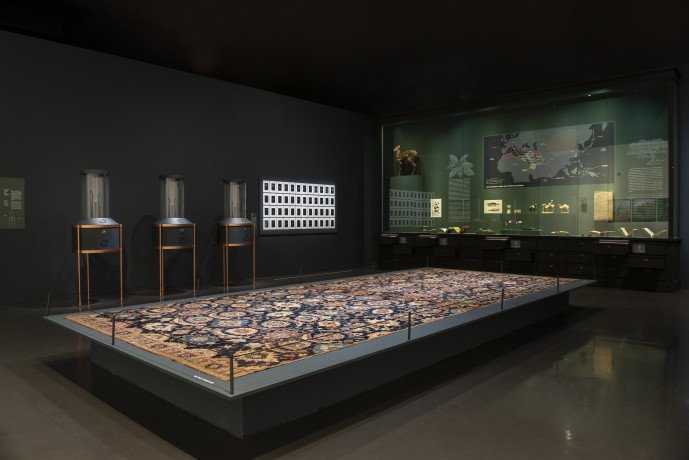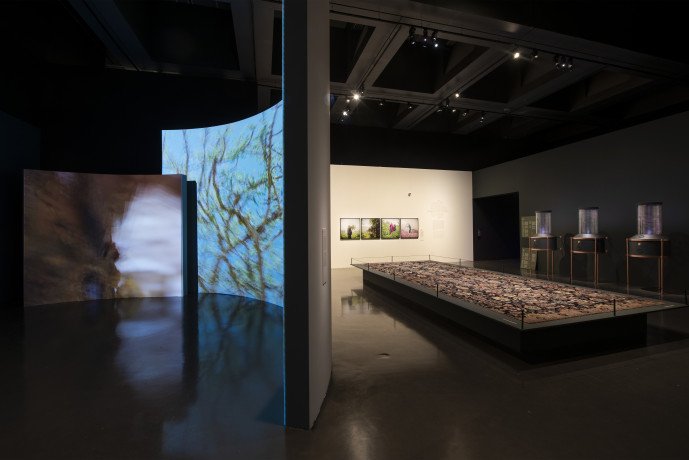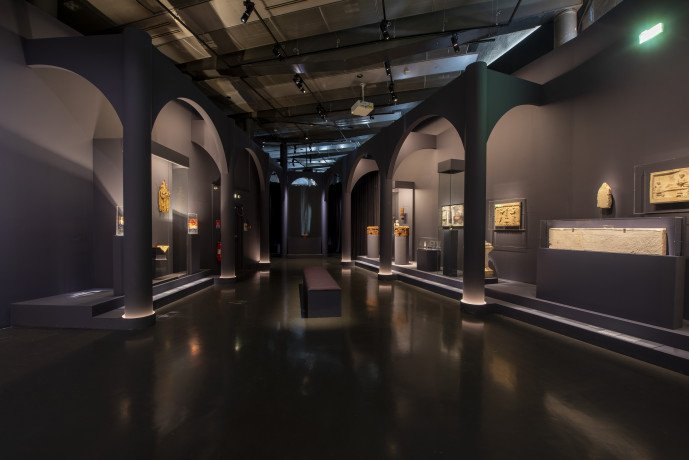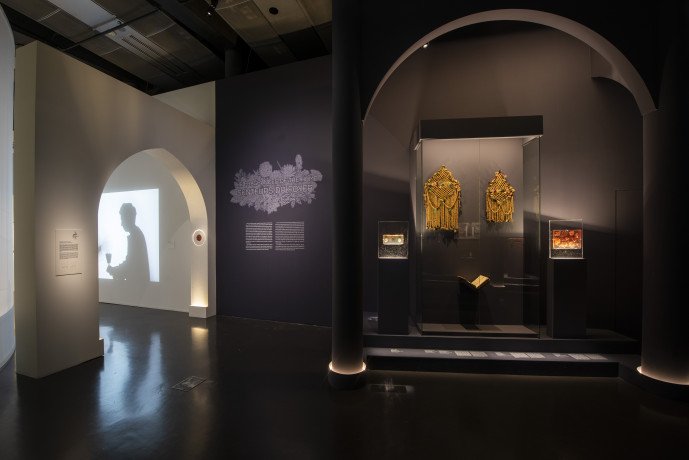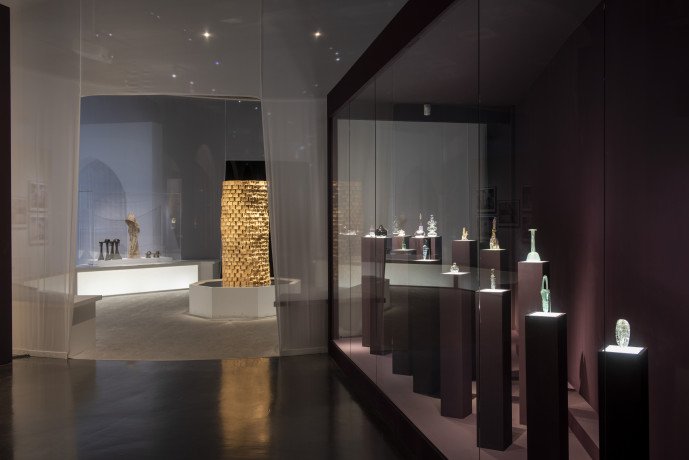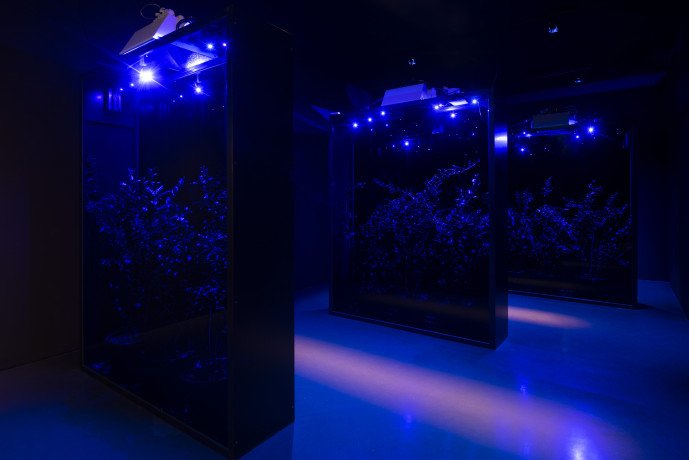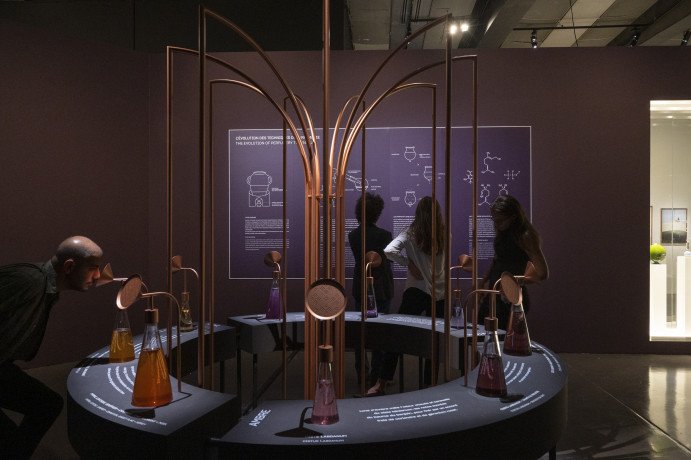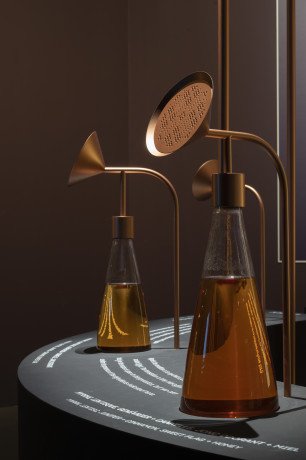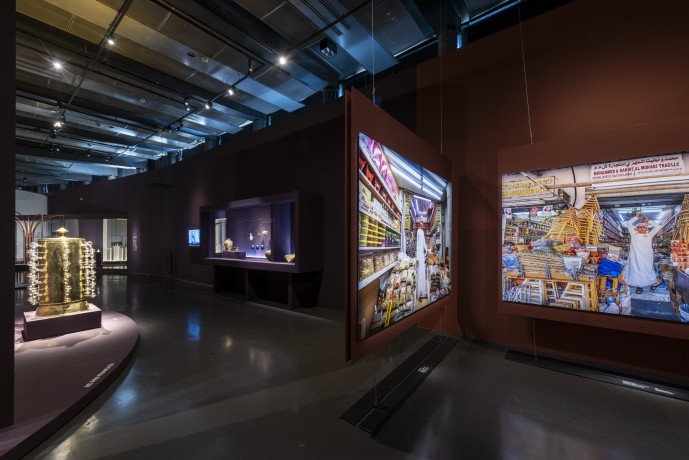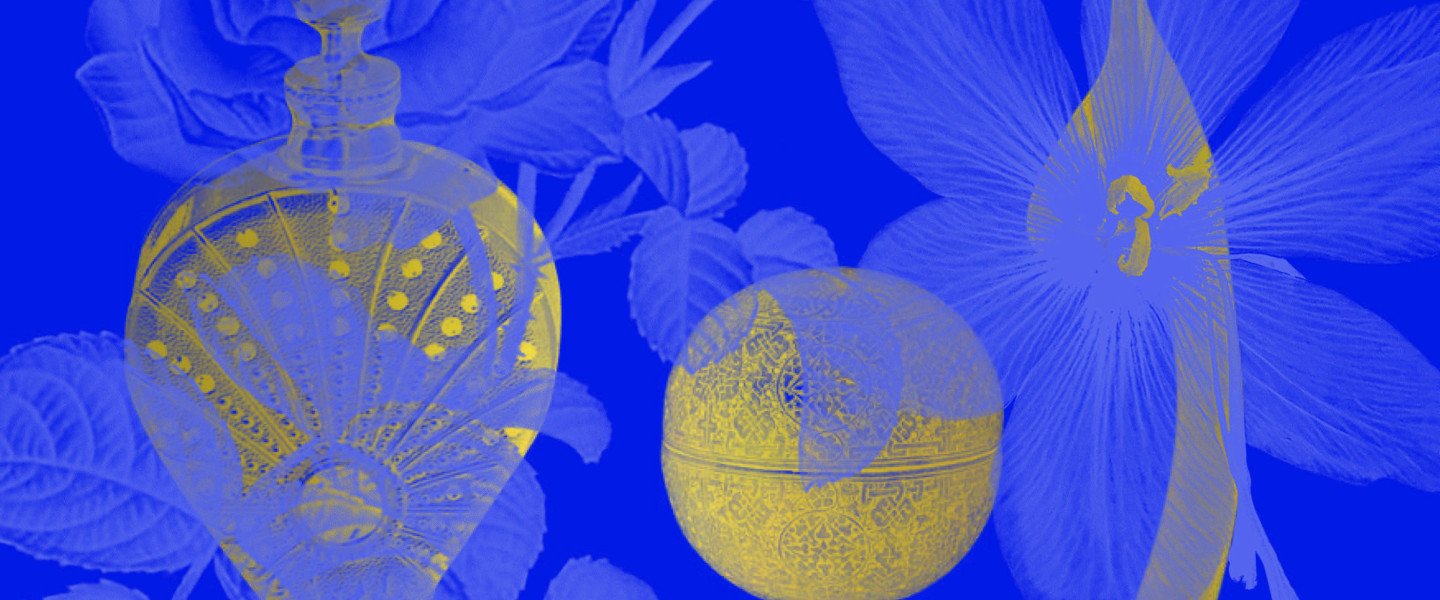
Parfums d'Orient / Perfumes of the East
Exposition prête à voyager
Available on tour
> Institut du monde arabe 26 septembre 2023 - 17 mars 2024 / September 26, 2023 - March 17, 2024
> Riyad, Musée national saoudien - 21 mai 2024 - 14 septembre 2024 / May 21, 2024 - September 14, 2024
L’Institut du monde arabe vous convie à un fabuleux voyage, à la découverte des parfums d’Orient et de leur histoire. Au fil d’un parcours de plus de 1000 m2 mêlant œuvres anciennes et contemporaines, jalonné de surprenants dispositifs odorants et de senteurs spécialement créées par le parfumeur Christopher Sheldrake, une invitation à voir – et à sentir – combien, du Haut-Atlas aux rives de l’océan Indien, les fragrances constituent depuis toujours une dimension essentielle de la culture arabe.
In an exhibition pathway spanning 1000 m2, around 200 heritage and contemporary pieces of art — manuscripts, miniature works, textiles, paintings, photographs, video installations — will take visitors on a trajectory where they can see and feel just how essential fragrances have always been to the Arab world, from the High Atlas to the shores of the Euphrates. Punctuated with surprising, scented devices, the exhibition engages all the senses and invites visitors to immerse themselves in the fragrances specially created for the occasion by perfumer Christopher Sheldrake for an innovative and exquisite olfactory experience.
CONTACT
Mario Choueiry
Responsable des expositions itinérantes
Touring Exhibitions
Tel: +33 (1) 40 51 38 80
Un enchantement, sous des lumières délicieusement tamisées, que cette trop courte balade olfactive au royaume de l’encens et de la rose, de la myrrhe et du musc, de l'oud et du jasmin, dont on apprendra aussi l’histoire au fil d’un pédagogique parcours.
Fabienne Pascaud, “Télérama”, 18-24 novembre 2025
Manuscrits, miniatures, textiles, peintures, photographies, installations, vidéos… près de 200 œuvres, ainsi que les matières premières aux sources des parfums, racontent l’importance des fragrances, onguents, huiles, baumes, eaux ou fumigations dans les pratiques culturelles, sociales et intimes du monde arabe. Leur dialogue dit combien le parfum irrigue les traditions et imprègne aujourd’hui encore la vie quotidienne. Les Parfums d’Orient sont bien l’empreinte toujours vive d’une culture ancienne et profondément enracinée.
Les plus précieuses des essences
De l’Arabie à l’Inde, des îles indonésiennes aux confins de l’Asie, le visiteur débute son voyage en découvrant l’origine des essences rares et précieuses qui firent la renommée des marchands arabes. De haute Antiquité, l’Arabie, terre de l’encens, de l’ambre gris et de la myrrhe, joue un rôle majeur dans le commerce des parfums. Rose, safran, jasmin poussent du bassin méditerranéen au Proche-Orient. D’autres matières premières sont récoltées au prix de périls innombrables dans l’Asie lointaine. L’origine de l’ambre gris ou du musc, demeure longtemps obscure, permettant aux Arabes de conserver le monopole de leur commerce. Des matières premières qui comptent encore aujourd’hui, avec le bois de oud, parmi les essences les plus prisées de la parfumerie.
Les senteurs de la cité
Le voyage se poursuit dans la médina, à la découverte des multiples usages du parfum dans l’espace public. Nous voici dans le souk des parfumeurs, détenteurs d’un savoir-faire hautement respecté. L’antique procédé de la distillation n’a-t-il pas été perfectionné par les savants musulmans à partir du IXe siècle ? Le quartier des parfumeurs est situé au cœur du souk, au plus près de la mosquée principale. Une proximité qui rappelle le rôle primordial du parfum lors des rituels de purification prescrits par l’islam et qui se déroulent au hammam, haut lieu de sociabilité.
L’occasion d’explorer les éléments de continuité et de rupture entre l’Antiquité préislamique et le monde musulman, et de remonter jusqu’à l’Égypte antique, aux temps où les parfums servaient à communiquer avec les dieux. En Islam, la culture populaire prête des vertus magiques aux fumigations d’encens…
Au cœur de l'intimité de la maison arabo-musulmane
Voici le visiteur parvenu au terme de son voyage : la maison. Parfumer ses hôtes fait partie intégrante du cérémonial d’accueil, essentiel dans la culture arabe, et aspersoirs d’eau florale ou brûle-encens sont présents dans chaque foyer.
Puis s’ouvre l’antre le plus secret : l’alcôve. Dissimulés dans des bijoux porte-parfums ou des boîtes ajourées disposées dans la chambre, les parfums suscitent le désir et accompagnent un ensemble de rituels de séduction. Le safran, le musc, l’ambre sont régulièrement cités pour leurs vertus aphrodisiaques et émaillent la poésie arabe pour chanter l’être aimé. C’est ainsi que, sur le doux parfum d’un baiser, se clôt l’exposition.
In an exhibition pathway spanning 1000m2, around 200 heritage and contemporary pieces of art — manuscripts, miniature works, textiles, paintings, photographs, video installations — will take visitors on a trajectory where they can see and feel just how essential fragrances have always been to the Arab world, from the High Atlas to the shores of the Euphrates.
An immersion into the fragrances of the East
Visitors are invited to embark on a marvellous adventure to explore the perfumes of the Arab world. From fields of rare essences to the perfumer’s workshop, from the streets of a medina to a hammam, and finally the sacred space at home, this ancestral culture that is still vibrant today unfolds in a show of aromas and spices. As such, the exhibition recounts the close relationship that ties perfumes into the Arab world. It sheds light on their long relationship, the characteristic fragrances of their bond, and the various traditions playing an essential social role that bring them together.
The rarest and most precious essences
From Arabia to the most remote corners of Asia, and from the Mediterranean Basin to the Middle East, visitors will discover the origins of the rare and precious essences to which Arab merchants owed their renowned reputation. Since the Earliest Antiquity, Arabia — land of incense, grey amber, and myrrh — has played a major role in the perfume trade. Floral essences of rose, saffron, and jasmine grow from the Mediterranean Basin to the Middle East, while humans have had to face unmeasurable risks to collect other raw materials from East Asia. The origin of certain materials, such as grey amber and musk, were for a long time kept secret, thus allowing the Arabs to maintain a monopoly over their trade. Together with oud wood, these have always been and continue to be the most cherished essences in perfumery.
The fragrances of the city
The journey then takes visitors to the medina where they will discover the many ways perfume has been used in the public space. They will witness the important role fragrances occupy in the Arab-Muslim society. As the city is a place for mingling and exchanging, all types of olfactory products can be found there with a range of specific uses: cosmetic, therapeutic, and religious. Visitors will walk through the perfume souk, then go to the baths before heading to prayer. Perfumers are very often apothecaries and have a well of highly respected knowledge. In order to create a perfume, a series of phases must be mastered, most notably distillation, a process dating back to Antiquity which was perfected by Muslim savants starting in the ninth century. As a sign of the high esteem in which perfume makers are held, their district is always located at the heart of the souk, nearest the main mosque. This proximity reflects the essential role of perfume in the purification rituals prescribed by Islam which take place at the hammam, a venerable place of social interaction.
The spiritual dimension given to perfume makes it possible to reflect upon how its use relates to the sacred and to underline the continuity and disruptions between pre-Islamic Antiquity and the Muslim world of yesterday and today. The history of perfumes begins in Ancient Egypt, where they were used to communicate with the gods. Then, in the Jewish and Christian religions, they were also used as an intercessor with God. Before Islam, perfumes belonged to God, but the Arab-Muslim culture offered them to humans as well as exclusive use over them. With the onset of Islam, popular culture became the one to bestow magical virtues on incense fumigation.
In the private quarters of an Arab-Muslim home
At the end of their journey, visitors will enter a home and witness how perfumes are used in private, even their most intimate and secret applications. First, perfume is a key component of socialising as shown in the ancestral rituals for receiving guests who are adorned with perfume by their hosts. It is thus an integral part of the hospitality ceremony and essential in Arab culture. Every home has its flower water diffusers or incense burners.
Finally, the doors are opened to the most private space: the alcove. Perfumes arouse desire and are included in a series of seduction rituals. Safran, musk, and amber are often cited for their aphrodisiac properties and appear in Arab poetry to praise the beloved. Fragrances are diffused in different spaces to arouse desire: solid perfumes are hidden in lockets or openwork boxes placed around the room in order to disperse a tantalising scent.
The heritage and contemporary works in the exhibition along with the sourcing of raw materials for perfumes attest to the importance of fragrances, ointments, oils, balms, waters, and fumigations in cultural, social, and intimate practices. Their dialogue recounts how perfume irrigated traditions and permeated daily life in the past and how it continues to do so in the present. Parfums d’Orient is the living mark of a deeply rooted ancient culture.
Revue de presse / Press review
COMMISSARIAT / CURATORS
Agnès Carayon, chargée d'exposition à l'Institut du monde arabe
Hanna Boghanim, chargée d'exposition à l'Institut du monde arabe

